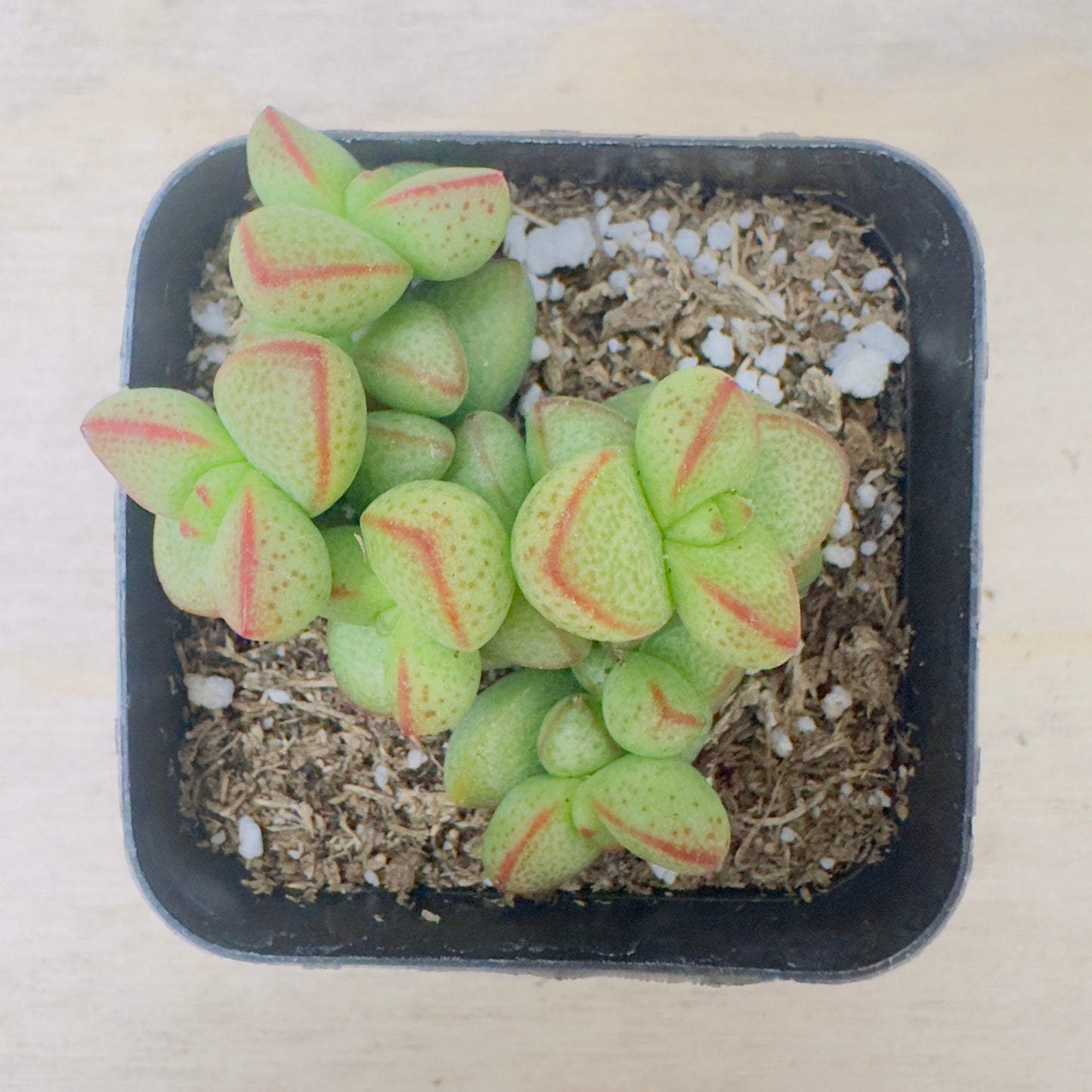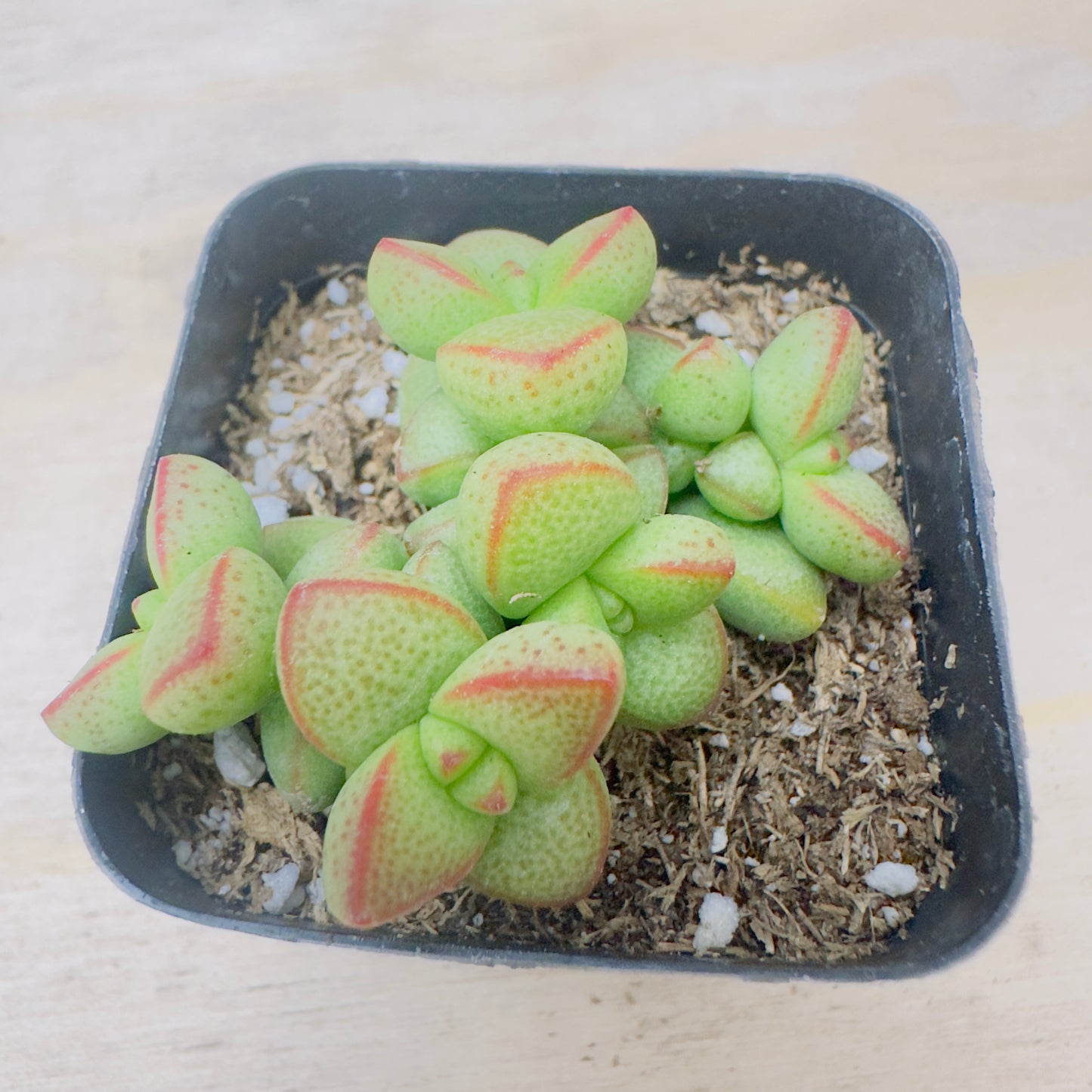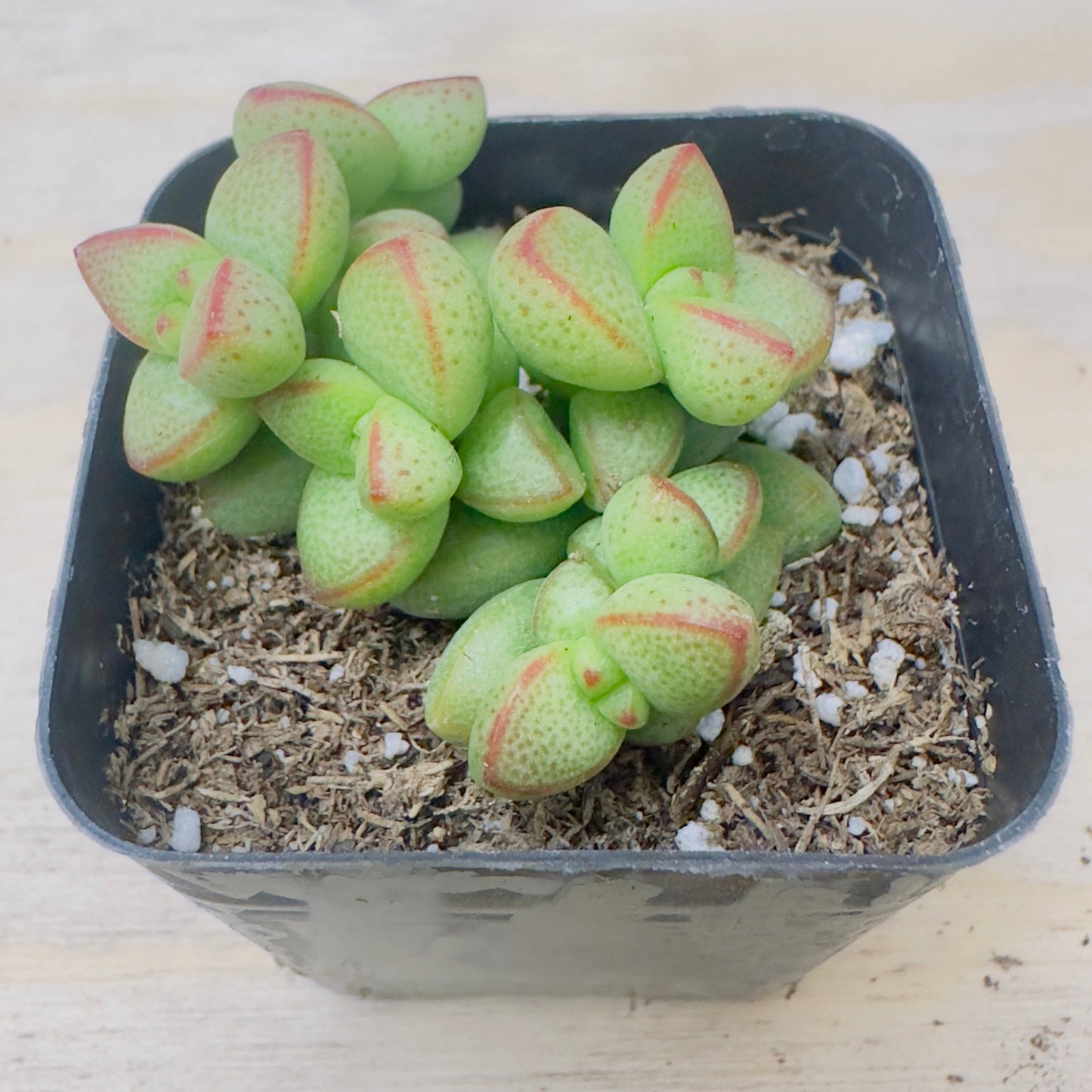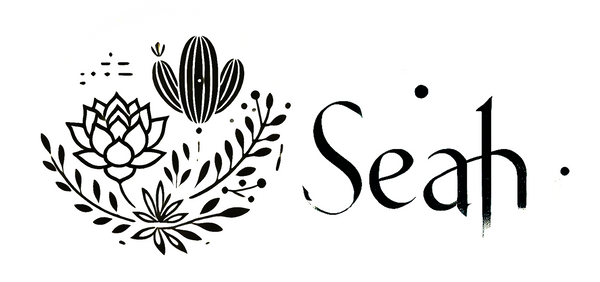Crassula rupestris var. monticola
Crassula rupestris var. monticola
In stock
Couldn't load pickup availability
📝 Description
Morphological Characteristics
Crassula rupestris var. monticola, commonly known as a variety of “Baby’s Necklace Vine” or “Rosary Vine,” is a small, stacked-leaf succulent in the Crassulaceae family. Native to mountainous regions of South Africa, it is known for its charming geometric form, compact size, and reddish margins.
The plant grows as a small, branching shrub with thick, triangular to ovate leaves that are tightly stacked in opposite pairs along upright or arching stems. Leaves are gray-green to pale green, often blushing pink or red around the edges when grown in bright sunlight or cool temperatures.
Mature stems may reach 10–20 cm (4–8 inches) long, and the plant gradually spreads into a compact mound or trailing cluster. In late spring or early summer, it produces small, star-shaped, pale yellow to white flowers in clustered heads at the tips of the stems.
Growth Habits
Crassula rupestris var. monticola is a slow- to moderate-growing, branching succulent. It can grow upright initially but tends to sprawl or trail over time, making it ideal for hanging pots, shallow planters, or rock gardens. It naturally forms dense mats in habitat, especially on rocky slopes.
Maintenance Points
-
Lighting: Needs bright light to full sun. Red coloration is enhanced in strong sunlight. Indoors, place near a south- or west-facing window.
-
Watering: Let the soil dry completely between waterings. Water sparingly in winter. Avoid water sitting in the leaf crevices to prevent rot.
-
Soil: Use well-draining succulent or cactus mix. Add sand or perlite for increased drainage.
-
Temperature: Best between 18–27°C (65–80°F). Not frost-hardy; minimum safe temperature is 5°C (41°F).
-
Fertilization: Feed monthly during active growing season with a balanced diluted succulent fertilizer. Skip feeding in winter.
-
Potting: Use shallow pots with drainage. Repot every 2–3 years to refresh soil or manage spread.
-
Humidity: Prefers dry conditions. Ensure good airflow around leaves.
Reproduction Method
Stem Cuttings:
-
Use clean scissors to cut a 5–8 cm (2–3 inch) stem with several leaf pairs.
-
Allow to callus for 2–3 days.
-
Plant in dry, well-draining soil. Water lightly after 4–5 days.
Offsets:
-
Mature plants may produce offsets at the base.
-
Separate gently, let dry, and plant as above.
Leaves:
-
Leaf propagation is possible but slower. Detach healthy leaves, let callus, then lay on dry mix and mist occasionally.
Additional Tips
-
Pest Control: Monitor for mealybugs and aphids. Treat with neem oil or insecticidal soap if needed.
-
Disease Prevention: Avoid overwatering. Ensure airflow and use breathable pots (e.g., terracotta) for improved drying.
-
Pruning: Trim leggy stems to encourage bushier growth. Use prunings for propagation.
-
Display: Excellent for rockeries, bonsai-style planters, succulent wreaths, and windowsills. Contrasts beautifully with rosette-form succulents.
-
Safety Note: Generally considered non-toxic, but best kept away from pets and children who might chew on leaves.
🌿 Care Tips
Plant Care
Light
Water
Soil
Temperature
Hardiness
Fertilizer
Propagation: Leaf/offset cuttings
Common issues: Etiolation, mealybugs, rot
🌟 Note: It’s normal for succulents to appear slightly shriveled after shipping. They usually recover within a few days in a suitable environment.
📦 Shipping Info
Seah Shipping Policy
Effective Date: November 2025
This Shipping Policy applies to orders delivered within the continental United States (the lower 48 states). By purchasing from Seah, you agree to the terms below.
1) Shipping Cost & Free Shipping
- Automatic rate calculation: Shipping is calculated at checkout based on weight, destination ZIP and carrier rates.
- Free Standard Shipping: Orders $59+ (pre-tax, after discounts) ship free to the lower 48 states.
- Alaska, Hawaii, Puerto Rico & other territories: Not eligible for free shipping or standard flat offers at this time.
- Taxes/Duties: Applicable sales tax and any fees are shown at checkout.
2) Processing Schedule
- Business days only: We process and ship Monday–Friday. No shipping on weekends or U.S. federal holidays.
- Handling time: 1–3 business days after payment confirmation.
- Cut-off time: Orders placed before 3:00 PM (PST) are prioritized for same-day processing; others roll to the next business day.
- Changes/Cancellations: Email support@seah.co within 12 hours of purchase; after that, the order may already be in processing.
3) Transit Times
| Method | Estimated Transit | Total ETA (Handling + Transit) |
|---|---|---|
| Standard | 5–8 business days | 6–11 business days |
| Express | 3–4 business days | 4–7 business days |
ETAs are estimates. Weather, holidays, carrier delays or high-volume periods may extend delivery times.
4) Seasonal Temperature & Plant Safety
- Winter (Nov–Mar): We strongly recommend adding a heat pack at checkout to protect plants from freezing. Orders shipped without a heat pack during cold conditions are not covered for cold damage.
- Summer heat: During extreme heat waves, we may hold shipments until temperatures normalize. We’ll notify you if there’s a hold.
- Packaging: Plants are carefully packed (bare-root or potted by type/size) to minimize transit stress.
5) Carriers & Tracking
- We ship via USPS / UPS / FedEx, selected automatically for best service to your address.
- When your order ships, you’ll receive a tracking email. Tracking typically activates within 24 hours.
- If you haven’t received tracking within 3 business days, contact us at support@seah.co or +1 (626)-999-1314.
6) Address Changes & Delivery Issues
- Before shipment: Request address changes within 12 hours of ordering.
- After shipment: We can’t modify the address once dispatched. Please contact the carrier for redirection options.
- PO Boxes: Supported for USPS only; UPS/FedEx require a street address.
- Seah isn’t responsible for delays or loss due to incorrect addresses provided at checkout.
7) Service Area
We currently ship to the continental U.S. (lower 48 states). Orders to AK/HI/PR and other territories are not eligible for free shipping and may be restricted.
8) Support
- Hours: Mon–Fri, 9:00 AM – 5:00 PM (PST)
- Phone: +1 (626)-999-1314
- Email: support@seah.co
- Address: 7870 Margaux Pl, Rancho Cucamonga, CA 91739, United States
Thank you for supporting our California nursery—each plant is hand-selected and packed with care. 🌱






